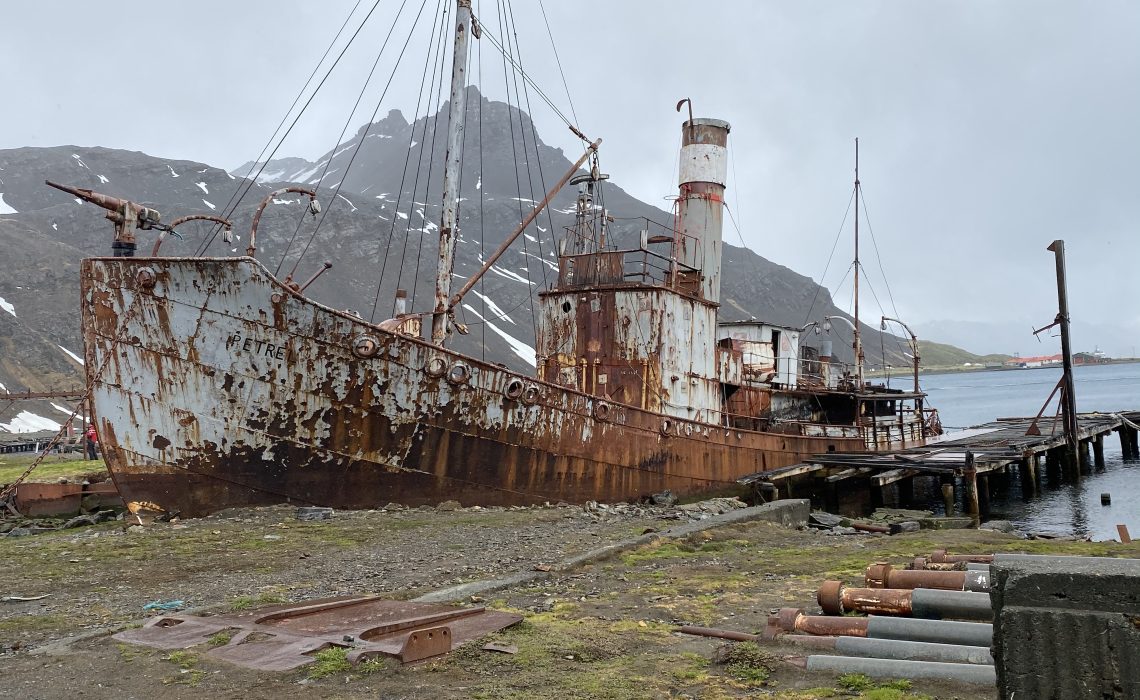
Why the Grytviken ‘spirit tables’ sculpture is important – a visitors perspective!
Future generations cannot learn from history if we eradicate the visible signs and monuments – that’s my belief. Nothing was more pertinent and obvious to me in South Georgia. The juxtaposition of the beauty and extensive wildlife on its beaches and surrounding ocean, compared to the remains of the Grytviken whaling station, where we nearly wiped out entire whale species, is a case in point. This place has much visible evidence of human devastation on our wildlife. Combining the ‘then and now’ is tricky, but it seems ‘art’ might provide a solution – a way of expressing history, AND showing hope.
Prior to embarking on the trip, visiting South Georgia for me was all about the Penguins! My quest to see as many as possible in their natural habitat, being the driving force. Yes I was looking forward to the other wildlife we might encounter, the snow, the lectures on board, and rubbing shoulders with the other like-minded guests, but I hadn’t taken the time to research the other aspects of South Georgia prior to the trip. Let’s blame a heavy workload right up to the day of departure! We learnt about South Georgia’s history from our talented guides on board, historians, geologists and the like – thanks Polar Latitudes and South Georgia Heritage Trust I don’t think I have ever learnt so much on a holiday!
What I hadn’t anticipated, was the impact Grytviken, a former whaling station from 1905 onwards would have on me. The steel remains on the distant shore tends to blend into the scenery somewhat when viewed from the ship, having weathered to a reddish patina, but standing in that place was a different matter and evoked all types of emotions.
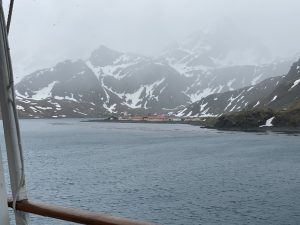
Rarely can you stand on the shores of Grytviken or indeed anywhere on South Georgia that we visited, in the ‘summer season’ and see whales. In fact, if you have ever been on a whale or dolphin trip, you know very well how difficult it is to find these beautiful creatures in our vast oceans. We were lucky enough to see two Blue Whales when we left Puerto Madryn and 2 or 3 Humpback whales in Antarctica.
It’s very easy to focus on the negative impact of the whaling industry, standing in that place, surrounded by the decaying buildings and artefacts of what felt like a war on our whales. The rusting whaling boat with its prominent harpoon and discarded weathering whale bones, so large, such a stark reminder of how we nearly pushed so many whale species to the brink of extinction. Not so easy it seems to think about that impact if we look back to that time, when you are distanced from the slaughter, and it provides you oil and candle wax to illuminate your home and soap to wash with.
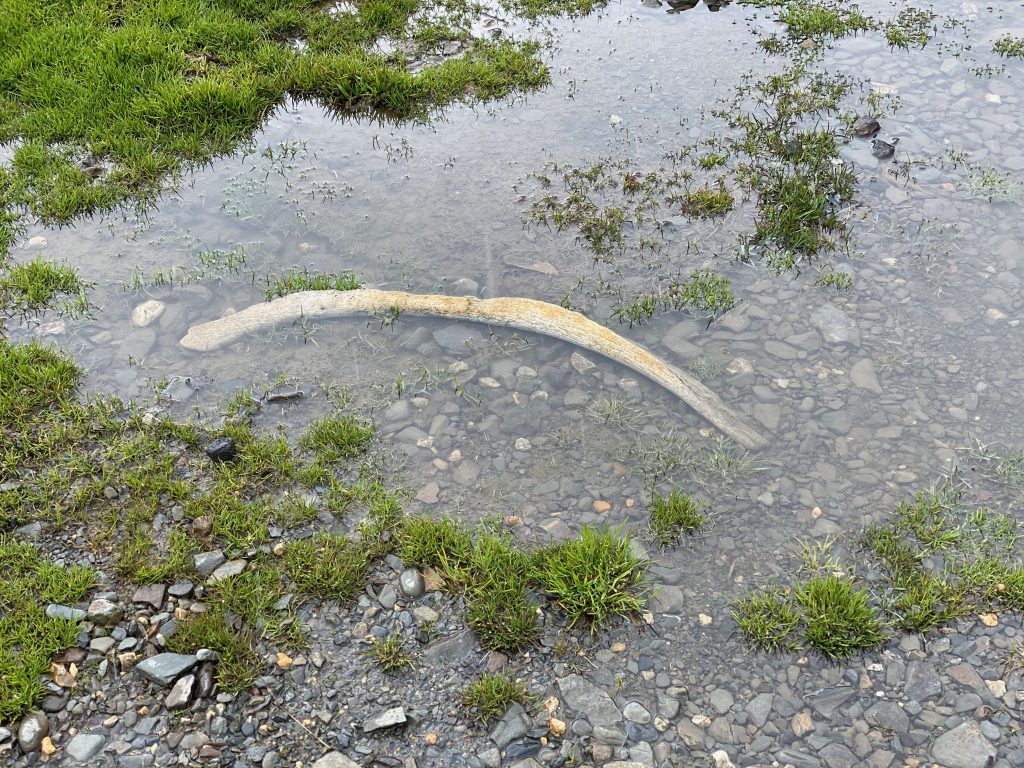
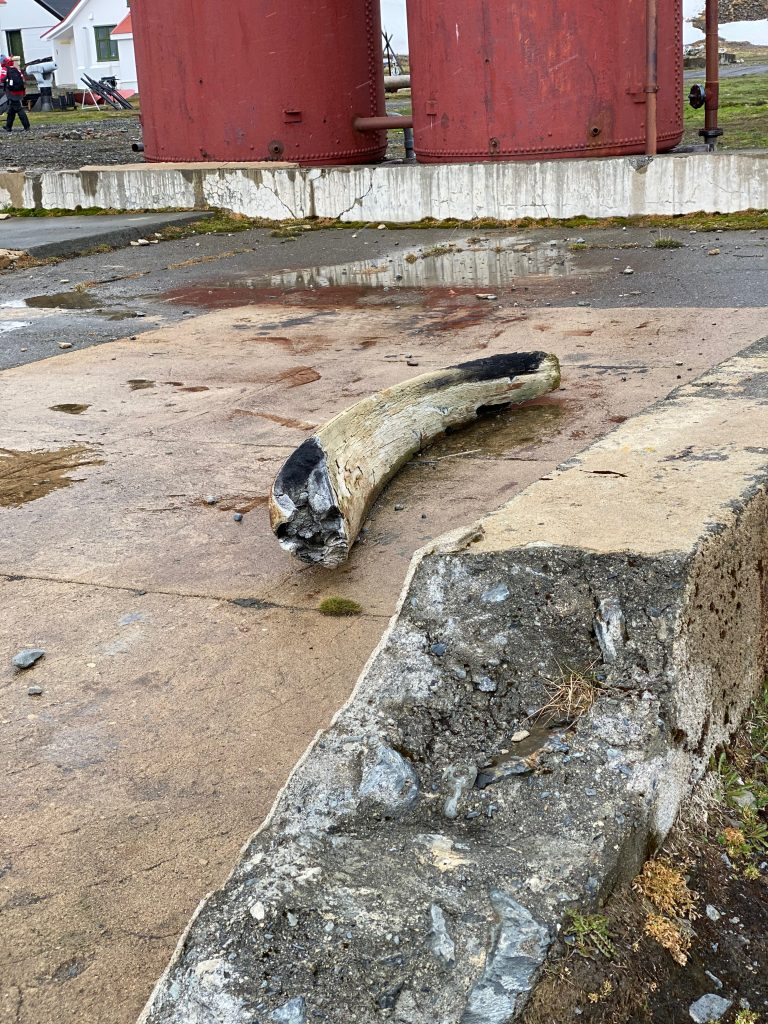
The area where they brought up the large whales from the sea, called the Flensing Plan, haunted my thoughts as I stood there – such a sombre and eerie feel to the place that, along with the other 6 whaling stations on these islands, depleted the whale population within a 60 year period of over hunting. What were we thinking!
175,000+ whales were lost between 1905 and 1965
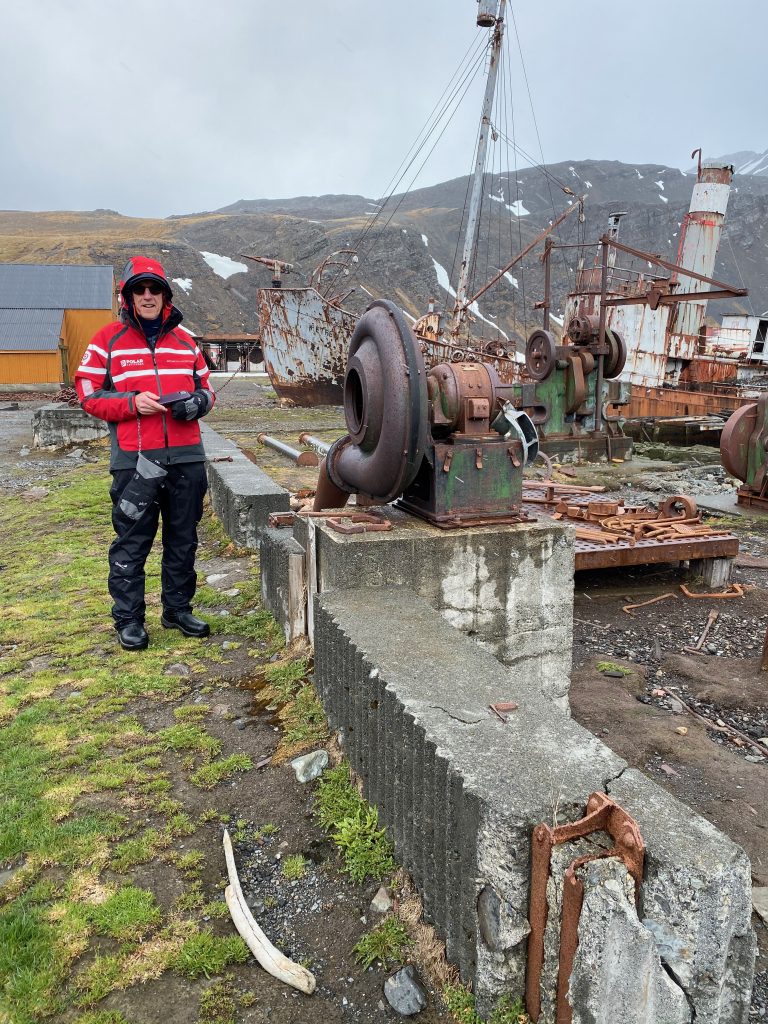
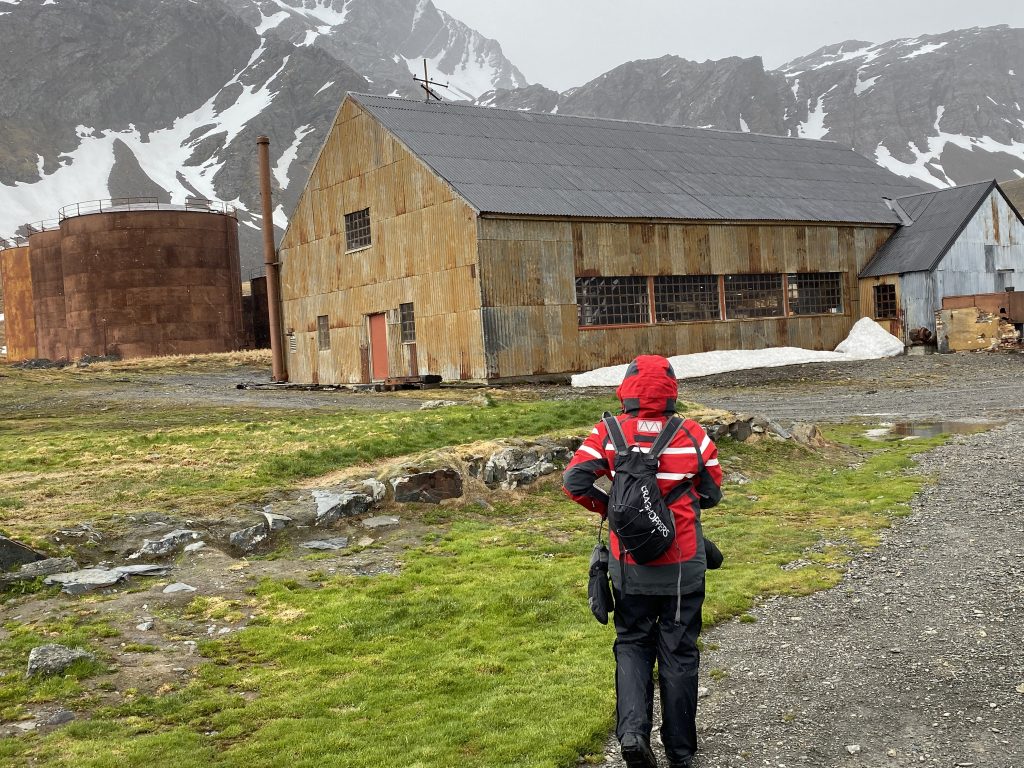
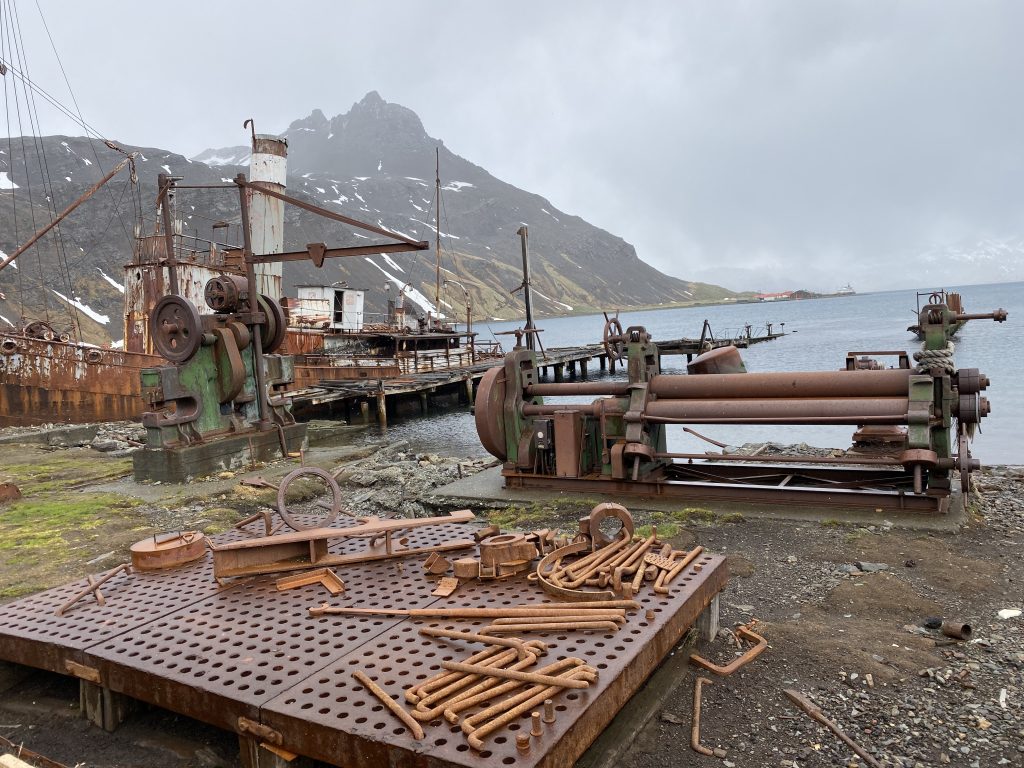
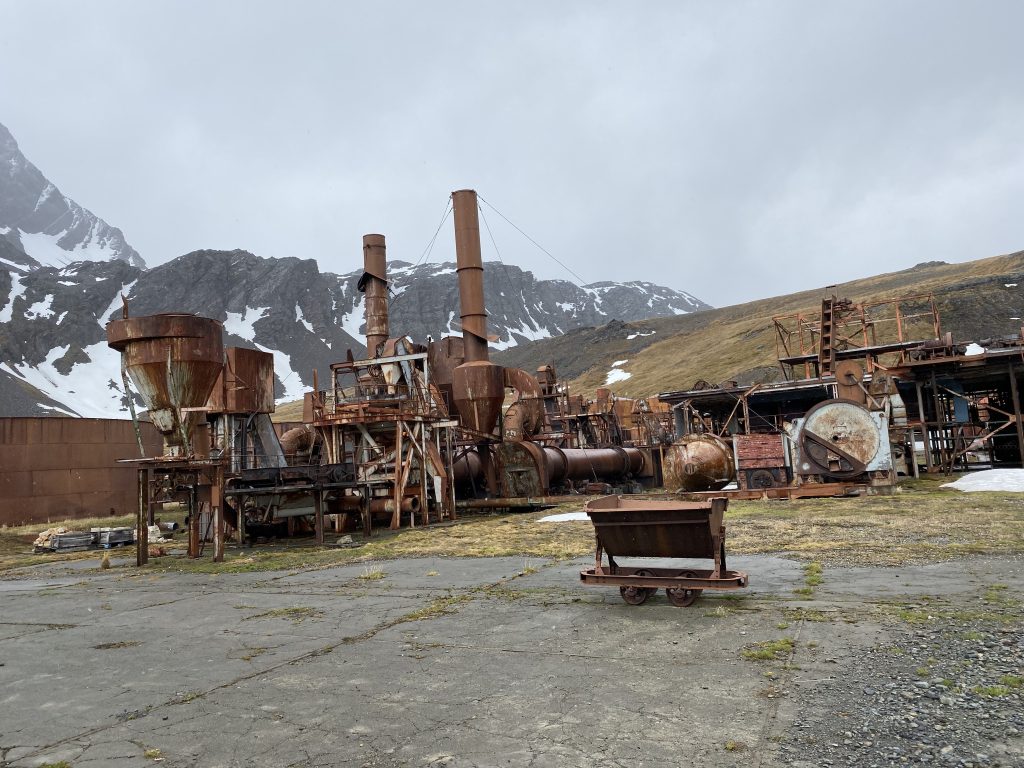
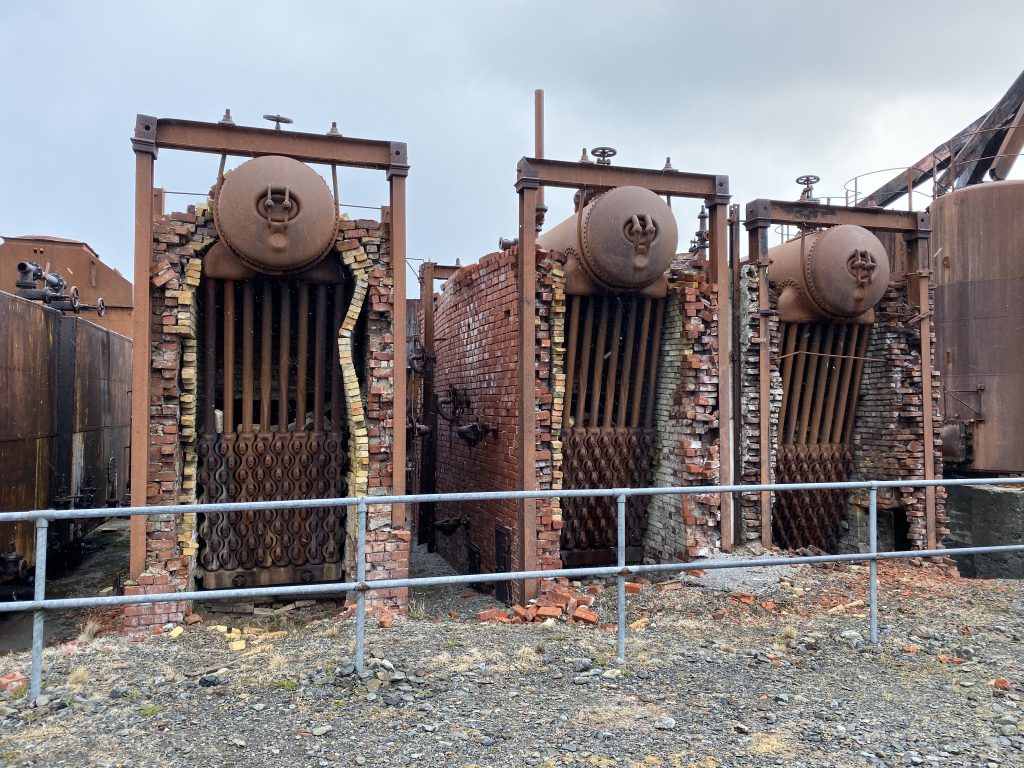
There are not many artists/sculptors, that could grasp the significance of South Georgia , designing an art piece that so sympathetically blends in with soft patinas of the aged steel. One that doesn’t ignore our past wrong doings, our past history but tells the tale of recovery and hope.
Do you enjoy my writing?: Always optional, though Donating even a small amount occasionally, enables me to continue to be another voice for the environment, supporting organisations focussed on conservation and restoration through my blogs, video’s, giving my time on committees, raising awareness. Click on the Donate button, top right hand side of the page for more information on how I am contributing and why your donation counts.
Commensalis – The Spirit Tables of South Georgia
Michael Visocchi, Scottish sculptor, works with all types of materials, wood, metal, paper even, with his work often addressing the landscape, nature and human impact on it. I met him early on in the commission on a video call, and can only describe him as lovely, lively and inspiring individual – very much an artist, and so creative!
There will be a table for each of the whale species: Humpback, Sei, Sperm, Southern Right, Fin and Blue, with a smaller ‘Key’ table, a Nightingale chart showing how many whales were processed, by species – its a bit like a pie chart. Each table takes that piece of ‘pie’ but then goes further using a unique set of Rivets to reflect an element of that species for instance, the Humpback Whale table’s rivets pattern are in a spiral, similar to the pattern they make when they are corralling krill to feed on. The number of rivets is an indication of the number that we think that species has recovered to.
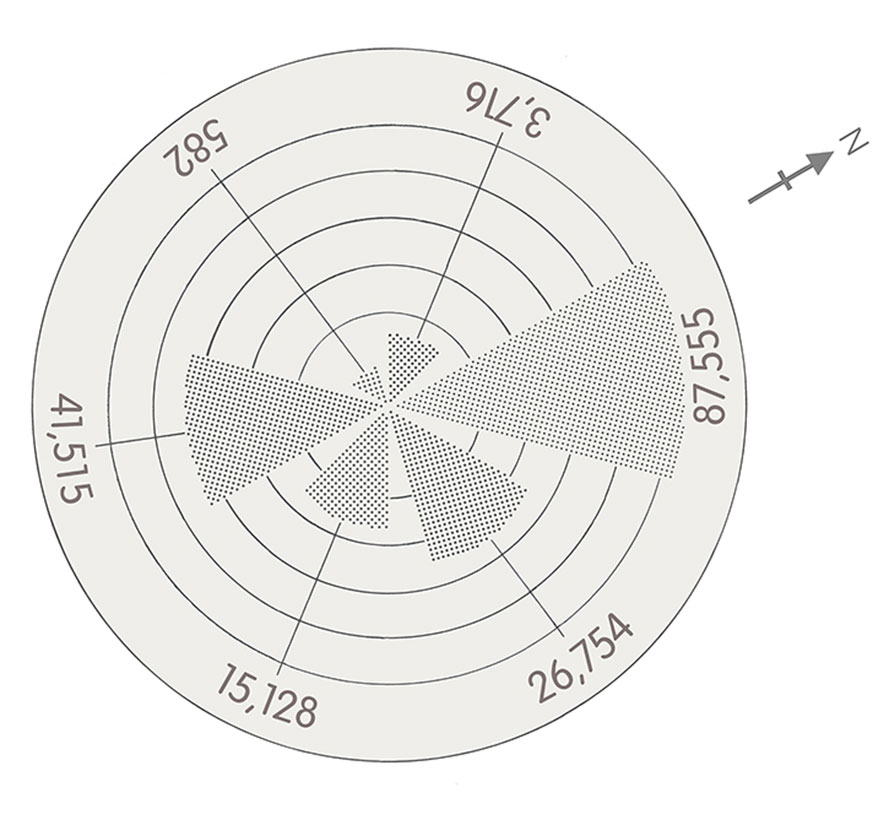
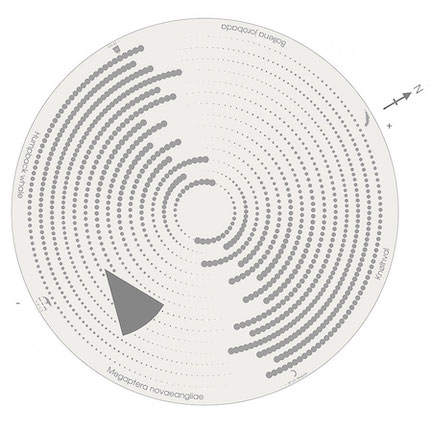
This sculpture, these tables, are a magnificent way of visualising the past whale destruction and the current recovery, that everyone can enjoy – we know that ‘Art’ crosses so many boundaries, it’s international, inspirational and everyone can appreciate it, even if they can’t visit in person.
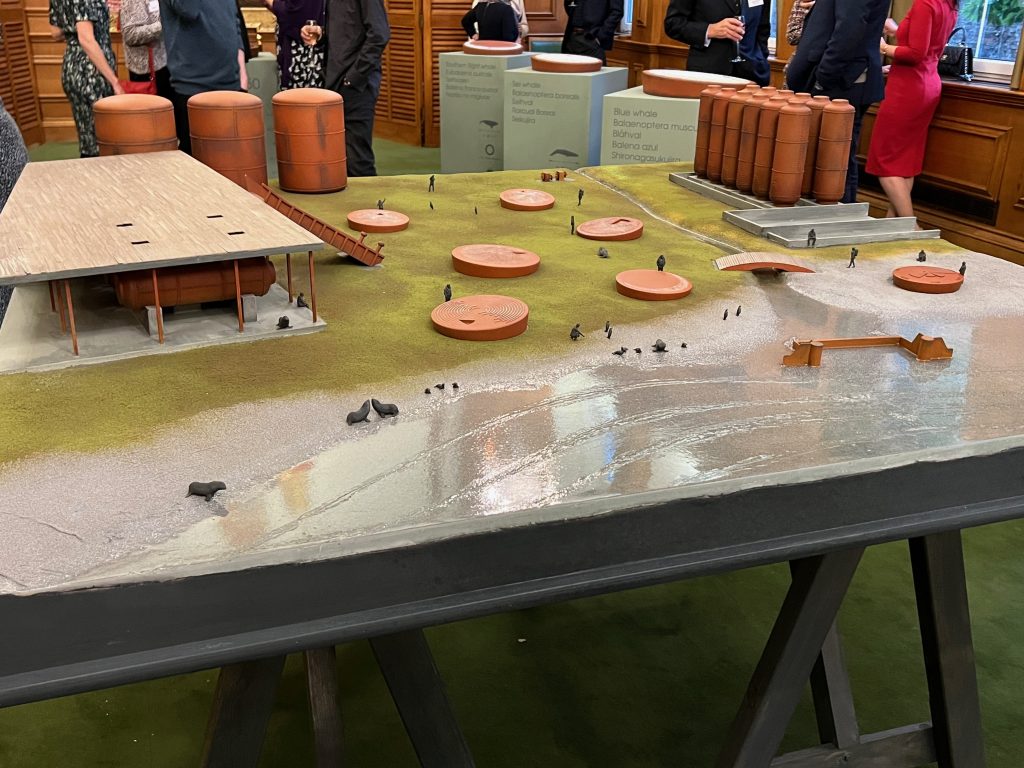
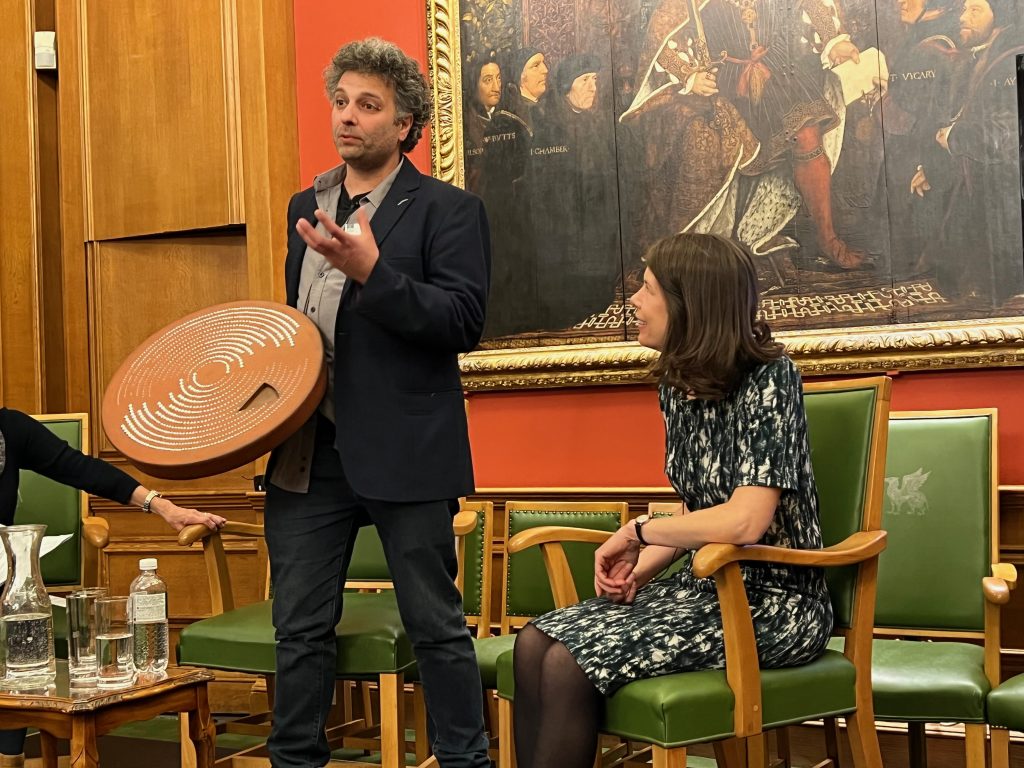
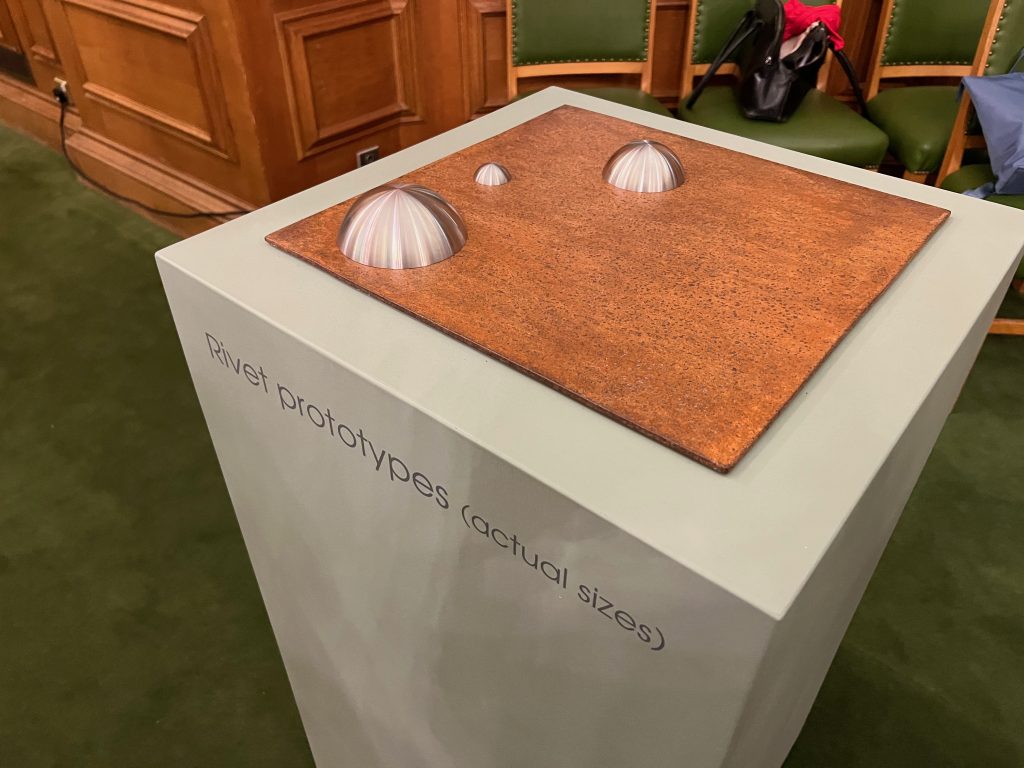
I can’t imagine a more beautiful blending of past history and recovery of our whales
What Can You do to Help?
As is often the case, it’s a few people that are achieving extraordinary things! Not that this is new to the team of the South Georgia Heritage Trust. It’s an eco system in recovery – read about their decade long successful Habitat Restoration project – and Commensalis draws from many of these aspects which I am pleased to see. They are unsung heroes and this is a place the world can take hope from. In the words of David Attenborough, who recently wrote them a letter of support for their work, he says following the important restoration work, the island has become:
… a hub of environmental science which is now helping the world to understand environmental change
Sir David Attenborough
It’s a huge task. Think about how you transport these huge tables to one of the most remote places on the planet! Albatros Expeditions, WSP and Creative Scotland are supporting the project but they need more help, so if you are a Corporate think about whether you could provide assistance, physically or financially.
Sponsor A Rivet Campaign Supports Further Whale Reasearch
Anyone can sponsor a Rivet – its easy and low cost, with three size and donation options. Take a look at all of the details HERE, the three reasons why you might want to become a sponsor and the legacy you will help to leave behind by doing so.
We have to remember that the whales return to the seas in South Georgia is only part of the story – the impact, depending on the species, is worldwide. For example, Humpback whales travel great distances every year, with some of the longest migrations for mammals and can be found in many of the worlds ocean’s so this return and any support that you give to this project has a worldwide impact.
We can’t ignore our history and we shouldn’t try to eradicate visible signs of it, what we should do is find a way of celebrating the lessons we have learnt from it. Commensalis helps us to do exactly that

Hi Sue, Your blog is the best explanation of the artwork that I have seen. It’s now clear what tables and rivets are trying to portray and why. =
Glad it helped Brad. I think they will meld history and present day well, in something that can be appreciated internationally